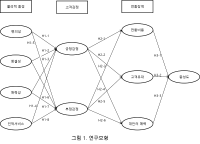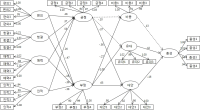
Purpose The purpose of this study was to conduct a typological classification of female college students in sport studies regarding perceived career barriers. Methods Q-methodology was used to identify female college students’ viewpoints on carrier barriers. The Q sample was distilled from 76 statements (64 from literature reviews and 12 in-depth interviews) to 25 statement after conducting literature review, in-depth interviews and surveys with open-ended questions. The P sample for this study was 30 students around Seoul and PQmethod software was used for data analysis. Results Three distinct views were extracted: First type of ‘career opaque’, revealed that students have failed to find their own aptitude and interest. Second type of ‘sexual discrimination-male centered’, implied students’ concerns about discriminating factors in relation to marriage and pregnancy for the job they desire. Third type of ‘Insufficient experience and qualification’, indicates students perceive their lack of experience or qualification required for their career. Conclusions The identification of these three viewpoints could provide insights that can be used to design more segmented and detailed career policies for female college students in sport studies.


Purpose The purpose of this study is to classify the subjectivity of re-socialization barriers among retired footballers. Methods Q methodology was conducted to identify constraint factors contributing to social adjustment and reemployment perceived by 28 P-samples. Results Re-socialization barriers were classified as ‘Type I: Internal-constraint’, ‘Type II: External-constraint’, ‘Type III: Internal-conflict’, and ‘Type IV: External-conflict’. These types provided a variety of academic and practical discussions, depending on where the barriers are taken from (internal and external) and what depends on them (objective conditions and subjective ideas). Conclusions This study focused on the subjective structure of retired footballers and complemented traditional methodology focusing on hypothesis testing. Therefore, each type found in this study provides useful information not only in follow-up study on retired athletes, but also in policy-making decision such as support projects.



The purpose of this study was to investigate the relationship between physical environment, customers' emotions, switching barriers and loyalty among water ski resort users in Gyeonggi-do and Gangwon-do province. Convenience sampling method was used, 277 of the questionnaires were selected as the ultimately valid sample. Data were analysed by SPSSWIN 18.0 and AMOS 18.0 program using frequency analysis, reliability analysis, correlation analysis, confirmatory Factor Analysis(CFA) structural equation model(SEM). The research findings are as follows. First, relations between physical environment and customers' emotions, attractiveness, cleanliness, convenience and human service had a significant positively impact on positive emotional response. convenience, attractiveness, human service, and cleanliness had a significant negatively impact on negative emotional response. Second, relations between customers' emotions and switching Barriers, positive emotional response did not have a significant impact on switching cost and interpersonal relationship, but positive emotional response had a significant impact on attractiveness of alternatives. negative emotional response had a significant impact on switching cost, interpersonal relationship and attractiveness of alternatives Third, relations between switching barriers and loyalty, switching cost did not have a significant impact on loyalty. but interpersonal relationship and attractiveness of alternatives had a significant impact on loyalty.


Purpose The current study investigated the effects of exercise information using social network service(SNS) to identify changes of physical activity and psychological variables among inactive college students. Methods Inactive college students(30 experimental group, 30 control group) were voluntarily participated in the 12-weeks intervention. During this period, the experimental group received exercise information through SNS. And all study participants’ physical activity, stages of physical activity, self-efficacy, motivation, and perceived benefits and barriers were measured at the pre, mid and post intervention. Frequency analysis, chi-square test, 2-way ANOVA RM were conducted to analyze data obtained in the study. All procedures were performed by using SPSS 23.0. Results The exercise information intervention using SNS during 12 weeks had a positive effect on the stages of physical activity of inactive college students, and there were statistically significant differences. In addition, physical activity, perceived benefits and barriers, self-efficacy, motivation positively improved after the intervention, but there were no statistically significant differences between experimental and control group. Conclusions The present study suggests that psychological strategies using various SNS programs have positive effects for inactive college students to increase physical activity and its related psychological variables.
PURPOSE This study aimed to explore the re-socialization process of college soccer players who rejoin college soccer clubs after dropping out. METHODS A case study approach was employed, and participants were selected using the snowball sampling method. Data were collected through in-depth interviews, participant observation, and literature reviews. The authenticity of the data was validated through triangulation, member checking, and peer debriefing. All research procedures were conducted following approval from the institutional review board. RESULTS The study revealed several key findings. First, participants faced numerous challenges during the re-socialization process into sports, including interpersonal, academic, and emotional difficulties. Second, distinctive features of the re-socialization process emerged, including the determination and effort required for adapting to university life, support from socialization agents within the university, and rapid re-socialization following dropout. Third, experiences within collegiate soccer clubs indicated low barriers to entry for former athletes, academic success through complementary relationships, a hierarchical culture familiar to student-athletes, and enhanced satisfaction in interpersonal relationships and a sense of belonging. CONCLUSIONS This study underscores the importance of institutional support that enables college athletes to participate in sports clubs, facilitating the successful re-socialization of athletes who have dropped out.
PURPOSE This study developed and applied a group counseling program for university athletes’ career development. METHODS Following Kim’s (2002) procedure for developing group counseling, this program was based on social cognitive career theory and finalized by using two preliminary studies and expert validation evaluation. Afterward, Taekwondo players from University A in Chungcheongnam-do and University B in Seoul were assigned to experimental and control groups, respectively, and then a nonequivalent control group design was conducted. The experimental group was provided with a six-step career group counseling program, including introduction, understanding personal and distal context, enhancing self-efficacy and outcome expectations, developing career interest, deciding on a career, and closing, for ten 45-minute sessions, twice a week. RESULTS First, results of two-way repeated measures ANOVA showed statistically significant changes in career decision self-efficacy (self-appraisal, occupational information, goal selection, planning, and problem-solving) and career attitude maturity (determination, certainty, and independence). Second, analysis of the outcome assessment by session showed the following positive results: consideration about the future after sports retirement, self-understanding, identification of jobs that fit aptitude, improvement of self-efficacy, having a positive mindset when switching careers, confidence in one’s preferred career, exploration into solutions to career barriers, understanding of preferred career, setting specific career goals, and deeper understanding of careers. CONCLUSIONS In sum, these findings indicate that the career counseling program had a positive effect on university athletes’ career development. We hope this study will serve as a catalyst to expand the discussion on retirement from sports and career development.
PURPOSE This study investigated the perceptions and experiences of collegiate student-athletes with mental health concerns who are receiving sport psychology services. METHODS A total of 196 college student-athletes (98 male, 98 female) were recruited for the quantitative phase, while 14 athletes from 7 sports participated in the qualitative phase. This integrated approach sought to provide a comprehensive perspective on the research subject. The quantitative participants answered scales for depression (CES-D), anxiety (GAD-7), social support (NCAA RSSS), and mental help-seeking attitude (MHSAS), and the qualitative participants underwent in-depth interviews using a semistructured questionnaire based on a socioecological model. Quantitative data were examined using confirmatory factor analysis, reliability measures, independent t-test, and one-way analysis of variance via SPSS 28.0 and AMOS 28.0, and qualitative data were inspected through content analysis and expert meetings. RESULTS First, higher levels of depression, anxiety, and perceived social support were reported by female athletes as opposed to male athletes. Second, athletes in individual sports reported higher levels of social support than those in team sports. Third, athletes who planned to undergo future psychological counseling reported higher anxiety, social support, and helping attitudes than those with no plans to do so. Fourth, athletes who slept for more than seven hours reported lower levels of depression and anxiety and higher levels of perceived social support than those who slept for six hours or less. Fifth, freshman athletes reported higher depression levels than sophomore athletes. Sixth, student-athletes with no scholarships had higher anxiety levels than those with partial scholarships, who then reported higher perceived social support than those with full scholarships. Seventh, a lack of accessibility was the primary barrier to psychological service access for student-athletes. Eighth, engagement in interpersonal relationships was identified as a major stressor among student-athletes. CONCLUSIONS Differences in collegiate student-athletes’ mental health status as well as perceptions of and experiences in sport psychology services depend on various factors. These findings may serve as foundational data for improving sport psychology support services for collegiate student-athletes.
Purpose This study is a phenomenological research which tries to describe the subjective experience and to analyze multi-layered meanings, and it finds out the men's training experience and meaning. The purpose of this study is to investigate why the men do Yoga and what the subjective meaning of Yoga experience, and the study examines critically whether Yoga experience especially focused on women is against gender performance and dominant body discourse. Methods For the study, 6 middle & young-old aged men who do Yoga more than 6 months every week are selected as participants. Results The meaning of Yoga for middle & young-old aged men in their lives is as follows. First, it is hard for men to experience Yoga because of social and cultural background. Finding Yoga class which takes men's membership is difficult. Second, middle & young-old aged men's physical feature(interest in their health and disease) and personal background(women friendly daily life) become specific motivation to overcome the barrier to do Yoga. Third, Yoga is 'alterative training', not a training. Yoga is considered as a training which replaces the feature of training called men's sports previously. Fourth, Yoga has a meaning of 'healing' to have our own time. Fifth, Yoga is changed by itself in Yoga culture which is focused on women even though middle & young-old aged men do Yoga for a long time. Sixth, middle & young-old aged men realize that the feature of Yoga is not 'for only women', and they thought it is 'neutral training that men can do too.' Conclusion Consequently, the reason why middle & young-old aged men do Yoga is started from the motivation regarding physical characteristics and personal background, and the main purpose is to cure and to heal our bodies and mind. For them, Yoga means 'alternative training to fit their bodies' and 'their own time'. Moreover, old male adult's training experience and meaning are against gender performance in that it cause a crack in stereotyped gender sports area, but it is notable that there is no intention to resist the dominant gender body discourse.